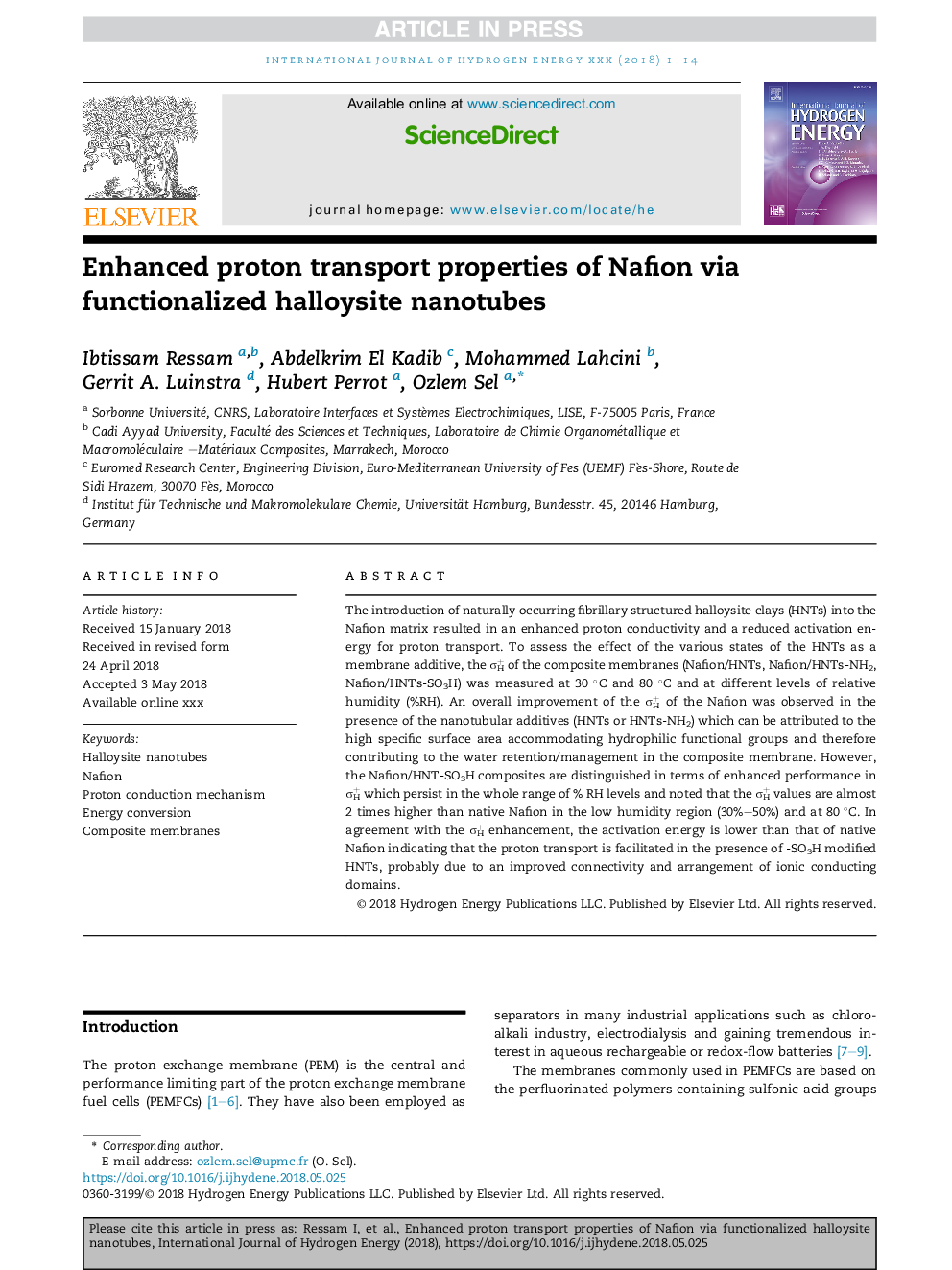| Article ID | Journal | Published Year | Pages | File Type |
|---|---|---|---|---|
| 11011595 | International Journal of Hydrogen Energy | 2018 | 14 Pages |
Abstract
The introduction of naturally occurring fibrillary structured halloysite clays (HNTs) into the Nafion matrix resulted in an enhanced proton conductivity and a reduced activation energy for proton transport. To assess the effect of the various states of the HNTs as a membrane additive, the ÏH+ of the composite membranes (Nafion/HNTs, Nafion/HNTs-NH2, Nafion/HNTs-SO3H) was measured at 30 °C and 80 °C and at different levels of relative humidity (%RH). An overall improvement of the ÏH+ of the Nafion was observed in the presence of the nanotubular additives (HNTs or HNTs-NH2) which can be attributed to the high specific surface area accommodating hydrophilic functional groups and therefore contributing to the water retention/management in the composite membrane. However, the Nafion/HNT-SO3H composites are distinguished in terms of enhanced performance in ÏH+ which persist in the whole range of % RH levels and noted that the ÏH+ values are almost 2 times higher than native Nafion in the low humidity region (30%-50%) and at 80 °C. In agreement with the ÏH+ enhancement, the activation energy is lower than that of native Nafion indicating that the proton transport is facilitated in the presence of -SO3H modified HNTs, probably due to an improved connectivity and arrangement of ionic conducting domains.
Related Topics
Physical Sciences and Engineering
Chemistry
Electrochemistry
Authors
Ibtissam Ressam, Abdelkrim El Kadib, Mohammed Lahcini, Gerrit A. Luinstra, Hubert Perrot, Ozlem Sel,
